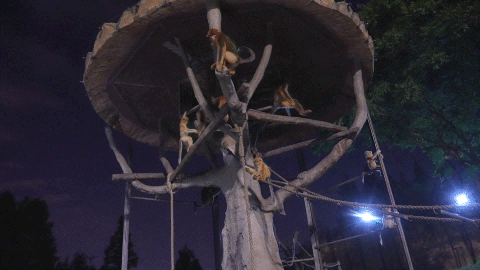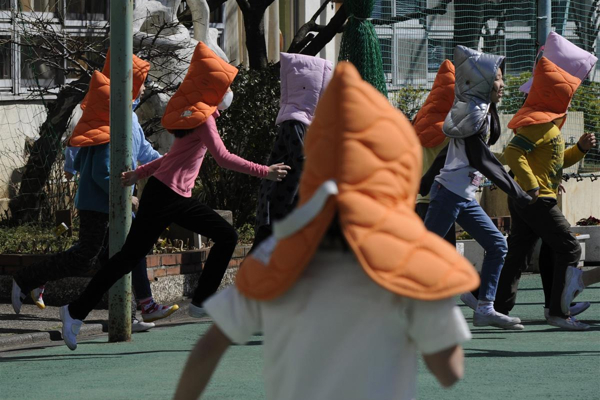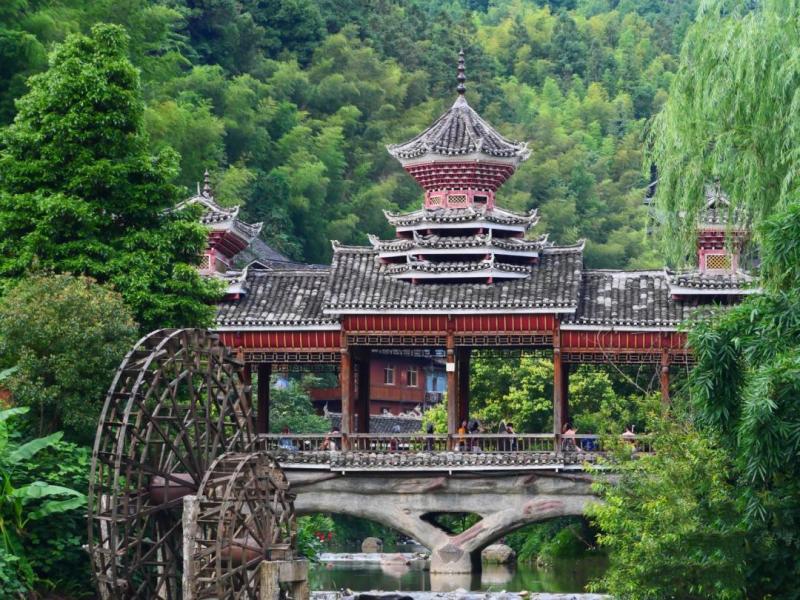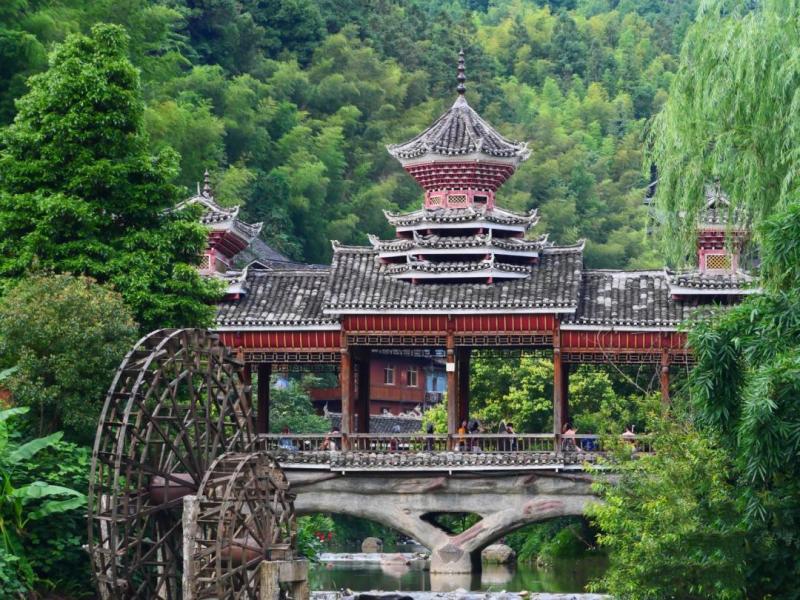After 13 years of applying for World Heritage, the "Pu'er Jingmai Mountain Ancient Tea Forest" has been listed as a World Heritage Site in Maishan | Cultural Landscape | Tea Forest
According to Pengpai News, at around 3 pm local time on September 17th, at the 45th World Heritage Conference held in Riyadh, the capital of Saudi Arabia, China's "Pu'er Jingmai Mountain Ancient Tea Forest Cultural Landscape" project was approved for inclusion in the World Heritage List after review by the World Heritage Committee, becoming China's 57th World Heritage Site.
After 13 years of application for World Heritage, the cultural landscape of Pu'er Jingmai Mountain ancient tea forest has become the sixth world heritage site in Yunnan Province, filling the gap in global tea world cultural heritage. Upon learning of the successful application for World Heritage status of the "Pu'er Jingmai Mountain Ancient Tea Forest Cultural Landscape", Wang Jianrong, former director of the China Tea Museum, said in an interview with The Paper that the core value of the Jingmai Mountain Ancient Tea Forest lies first in its thousands of acres of ancient tea forest, which is known as the "origin of natural tea plantations" and the "Natural Museum of Human Tea Culture History". It provides real and strong evidence for studying the origin, evolution, artificial domestication and dissemination of tea trees, as well as clarifying the relationship between the origin of tea species and early domestication and cultivation.
On site of the 45th World Heritage Conference held in Riyadh, the capital of Saudi Arabia
Entrance to Jingmai Mountain Ancient Tea Forest
Shan Jixiang, President of the Chinese Cultural Relics Society and former President of the Palace Museum, previously stated that Chinese tea culture has an extremely profound foundation and a long history. The Jingmai Mountain Ancient Tea Forest is unique due to its "ancient" and "forest". Compared to other famous terraced and farmhouse style tea gardens in the world, the Jingmai Mountain Ancient Tea Forest not only has a longer history, but also has distinct characteristics in its traditional understory planting method and maintenance of forest ecosystem stability.

On February 25, 2023, in Pu'er City, Yunnan Province, an aerial photo was taken of Nuogang Ancient Village.
The cultural landscape of Pu'er Jingmai Mountain Ancient Tea Forest is located in Huimin Town, Lancang Lahu Autonomous County, Pu'er City, Yunnan Province, China. It is an evolving cultural landscape composed of ancient tea forests, tea gardens, forests, and traditional villages. The land use practices of the Bulang and Dai ethnic groups here can be traced back to the 10th century AD. On the basis of long-term exploration and practice, the indigenous peoples have developed intelligent techniques for understory tea cultivation, which have been passed down to this day. They are a model of primitive forest agriculture and human tea cultivation models. The ancient tea forest in Jingmai Mountain embodies the simple ecological ethics and wisdom of harmonious coexistence between humans and the environment, which has enlightening significance for sustainable development in the world today.
On site of the 45th World Heritage Conference held in Riyadh, the capital of Saudi Arabia
Wang Jianrong stated in an interview with Pengpai News that the core value of Jingmai Mountain's ancient tea forest lies first in its thousands of acres of ancient tea forest, in traditional villages inhabited by multiple ethnic groups, and also in its three-dimensional and composite mountainous high-efficiency agriculture and characteristic living landscape. "I firmly believe that the successful application of Jingmai for World Heritage will effectively promote the sustainable development of China's tea industry and greatly enhance its global influence."
Shan Jixiang previously revealed, "In June 2010, I came to Pu'er City to attend a seminar on the Tea Horse Ancient Road. Several friends showed me photos of the Jingmai Mountain Ancient Tea Forest, and its original ecological appearance shocked me. China's tea culture has spread to the world, but there is still no world heritage site related to tea. Can the Jingmai Mountain Ancient Tea Forest be declared a World Heritage Site? When I returned to Beijing, I invited Mr. Guo Zhan, the then Vice Chairman of the International Council of Monuments and Sites, to personally inspect Jingmai Mountain. After the inspection, Mr. Guo Zhan was particularly excited and believed that the Jingmai Mountain Ancient Tea Forest fully meets the criteria for applying for a World Heritage Site. The application for the Jingmai Mountain Ancient Tea Forest was officially launched thereafter." Over the past decade, the Jingmai Mountain Ancient Tea Forest Heritage Site has made a lot of efforts in value recognition, heritage protection, and other aspects around the application work, and has achieved many results

Looking back at the road of applying for the World Heritage Site of the Jingmai Mountain Ancient Tea Forest Cultural Landscape in Pu'er, we have gone through a full 13 years. In 2010, the application for the cultural landscape of Pu'er Jingmai Mountain Ancient Tea Forest was fully launched. This project was included in the preliminary list in 2013 and was a declared project submitted by China in 2021. In 2022, it completed an ICOMOS on-site inspection and was recommended for inclusion by a consulting firm, which has the potential to meet the OUV value standards. In 2023, it was approved to be included in the The World Heritage List at the 45th World Heritage Conference held in Riyadh, Saudi Arabia.
Cultural Landscape of Jingmai Mountain Ancient Tea Forest
The Jingmai Mountain Ancient Tea Forest Cultural Landscape Heritage Area covers an area of 7167.89 hectares, with a buffer zone of 11927.85 hectares. The heritage elements include 5 ancient tea forests, 3 separated protective forests, and 9 traditional villages.
Jingmai Mountain in Pu'er, Yunnan
Jingmai Mountain is located in Lancang Lahu Autonomous County, Pu'er City, Yunnan Province, China. It is surrounded on three sides by the Nanmen River and Nanlang River, tributaries of the Lancang River, among the mountains formed by the remnants of the Nushan Mountains in southwestern Yunnan. The Dai and Bulang ethnic groups, who have been living in Jingmai Mountain for generations, have discovered wild tea trees in the primitive forest of Jingmai Mountain. Through artificial domestication and cultivation, and after a long period of continuous efforts and development, a total of 1230.63 hectares of ancient tea forest has been formed from an altitude of 1250 meters to the mountaintop. A forest protection zone of about 40 meters wide is preserved around the tea forest. The village is located in the tea forest, built according to the mountain terrain, with an altitude of 1280 to 1500 meters. At a lower altitude, there are ecological tea gardens, cultivated land, and forest land, forming a vertical land use mode of agroforestry. As an organic cultural landscape, the traditional "understory tea planting method" that continues to this day is a living sample of human early use of tea trees. The landscape pattern of "mountain forest, forest tea, tea surrounding the village, and human raised tea" carries the millennium long history of "forest tea symbiosis, human land prosperity".

The magical ancient tea forest
The ancient tea forest is mainly distributed in forests at an altitude of 1250-1550 meters, around villages. They have a long history of over a thousand years and have been fully preserved to this day. The ancestors cultivated in the forest and planted tea under the trees, maximizing the preservation of tea biodiversity and ensuring no fertilization or medication, reflecting superb ecological wisdom. The ancient tea forest is still full of vitality today.
Dapingzhang Ancient Tea Forest in Jingmai Village
The ancient tea forest has been gradually cultivated by the ancestors of the Bulang and Dai ethnic groups in their production and life practices for thousands of years. Due to the fact that cultivated Pu erh tea trees gradually enter the low yield and decline periods after a certain age, there is a dynamic process of renewal and succession in ancient tea forests.
Ancient Tree Tea from Jingmai Mountain

The Jingmai Mountain Ancient Tea Forest adopts unique inter forest and under forest planting techniques.
In order to effectively prevent natural disasters such as strong winds, frost, and the spread of diseases and pests, the ancestors of Jingmai Mountain chose to develop ancient tea forests in limited areas between the forests. On the one hand, they control the area of tea plantation cultivation around the village, and on the other hand, they reserve forest protection lines around the ancient tea forest that has been cultivated, which is a primitive forest belt that is prohibited from logging. It is about 40 meters wide and surrounds the tea forest, known as the "back" by the Bulang people. A certain area of forest will also be reserved between villages as a dividing line, within which not only trees cannot be cut down, but also tea cannot be planted.
Entering the tea picking period, people pick tea in the ancient tea forest of Jingmai Mountain.
Yunnan large leaf tea is a shade tolerant, temperature loving, and moisture loving crop. When the light intensity reaches about 80%, the tea tree reaches its optimal growth state and maximum yield. The ancestors of Jingmai Mountain gradually realized the growth habits of tea trees, simulated and utilized the forest ecological environment, cut down some trees and shrubs in the natural forest while retaining a certain amount of shade trees, and then planted tea trees to maintain the tea garden. This ancient and unique understory planting technique has resulted in a distinct three-dimensional community structure of the tree layer, shrub layer, and herbaceous layer in the ancient tea forest.
The unique planting methods in the forest and under the forest give the Jingmai Mountain Ancient Tea Forest a rich biodiversity that is very similar to natural forests. The number of species, richness index, diversity index, and evenness index of ancient tea forests are very similar to natural forests, and are significantly higher than modern tea gardens with relatively monotonous forest forms.

In the "Four Centers" exhibition hall of the Jingmai Mountain Ancient Tea Forest Cultural Landscape Application for World Heritage, biodiversity is fully presented: 14 key protected wild plants in China, including cypress, cypress, Chinese toon, and buckwheat, coexist with tea trees, and there are countless wild animals.
Good plant and animal diversity not only creates a mutually restrictive relationship between species, but also effectively suppresses the occurrence of diseases and pests. At the same time, the fallen leaves of upper level trees provide rich organic nutrients for the growth of tea trees, effectively maintaining the stability of the ancient tea forest ecosystem.
A harmonious ancient village
Traditional villages have a very long history. The ancestors of the Bulang ethnic group migrated from present-day Ruili and the Wa state of Myanmar in the Tang Dynasty in the 7th century, and later the ancestors of the Dai ethnic group also came from the present-day Ruili area. They settled in Jingmai Mountain, grew tea for a living, communicated with each other, lived in harmony, and jointly built a beautiful tea mountain home.
On September 22, 2022, a Bulang ethnic villager from Wengji went to Tea Mountain to pick tea.

The declared heritage area includes two administrative villages, Jingmai Village in the northern Baixiang Mountains and Mangjing Village in the southern Mangjing Mountains. The former includes four Dai ethnic villages, including Manggeng, Mengben, Jingmai Dazhai, and Nuogang, while the latter includes five Bulang ethnic villages, including Wengji, Mangjingshang, Mangjingxia, Manghong, and Wengwa. Among various types of buildings, the proportion of traditional buildings is over 40%.
On February 25, 2023, in Nuogang Ancient Village, Lancang, Pu'er City, Yunnan Province.
The ancestors of the Bulang and Dai ethnic groups share a common principle in village site selection, which is to build along the mountain, with both divine mountains and tea mountains. They are all products of a high degree of integration between nature and culture.
Both Bulang and Dai villages are centered and oriented towards the village center, reflecting the cohesion of religion towards the village. Built around the divine mountain. Shenshan is not only a sacred place for religious worship, but also the location of the village's water source forest. The ancestors of the Bulang and Dai ethnic groups chose to build villages around the sacred mountain, where the slope was gentle, the land conditions were good, and it was suitable for planting tea trees. Built around the Tea Mountain. Wherever the ancestors of the heritage area settled, they planted tea and their villages were closely related to the tea forest. Especially, the Bulang people had a stronger dependence on ancient tea forests, and the Dai and Bulang villages were almost all embedded in the tea forest.
On September 21, 2022, a tourist visited Wengji Buddhist Temple in Nuogang Ancient Village, Pu'er City, Yunnan Province.

At the entrance of a village, there is usually a "Buddhist temple" building, and the central area is the village center. Outside the village, at a certain distance and higher altitude, there are feng shui forests and belief forests in the village. Out of respect for the gods, the internal buildings and streets of the village are basically arranged in a centripetal layout around the center of the village. The spatial layout characteristics of the belief system are reflected in the formation of a "village center" from the inside to the outside - a centripetal architectural street - an entrance "Buddhist temple" building - ancient tea forests, forests - feng shui forests.
The former director of the Palace Museum, Shan Jixiang, also recounted his observations while walking in the ancient tea forest of Jingmai Mountain in his newly published book "Walking Alone for Thousands of Miles", which detailed the ecology of the two traditional villages of Nuogang and Wengji.
Among these traditional villages, Nuogang is the most well preserved and an important embodiment of harmonious coexistence between humans and nature. "Nuogang" in Dai means "the place where deer drink water". It is said that herds of deer often come here to drink water, and the village is named after it. At present, 79 traditional residential buildings in the village have become national protected traditional residential buildings.
Nuogang Residential Buildings
In Nuogang, we felt the scene of residents planting and producing tea in traditional villages. The entire village is divided into an old village with independent space and a new village built in 2000. The village roads follow the terrain's high and low curves, forming a vivid and varied roadway space, with streams passing through the village.

In Jingmai Mountain, the traditional dry railed residential system has been continuously improved and perfected by generations of people living here to adapt to the humid and rainy climate in the mountains and make reasonable use of the land in the mountains, fully demonstrating the wisdom of the living people.
Wengji Residence
Wengji belongs to a typical Bulang ethnic village, with a roof decoration of "one bud and two leaves". These decorations have evolved from building components. Because early drywall style buildings had thatched roofs supported by two sets of intersecting rafters, with a section always left after being tied tightly, which was later changed to decoration. The water buffalo horn and the decoration of "one bud and two leaves" have become the architectural language of the totems of the two ethnic groups, and also integrate tea culture, which is quite distinctive.
Rich tea culture
The ethnic minorities in the Jingmai Mountain area of Pu'er have been living with tea for a long time, relying on tea for a living, forming a unique cultural landscape of mutual growth of forests and tea, and mutual prosperity between humans and the environment. This has led to a rich tea culture, including tea planting, tea picking, tea consumption, tea making, tea drinking, and tea tasting, with distinct regional and strong ethnic characteristics.

On September 22, 2022, in Pu'er City, Yunnan Province, the elderly of the Bulang ethnic group lived in Nuogang Ancient Village.
Tea is vividly reflected in the traditional cuisine, folk customs, residential decoration, weddings, funerals, and religious worship of Jingmai Mountain, and deeply influences the values and production and life of the living ethnic group.
Yunnan Pu'er, the ancient village of Nuogang in Jingmai Mountain amidst the sunset.
Outstanding Heritage Value
The road of applying for the cultural landscape of Jingmai Mountain's ancient tea forest has gone through a full 13 years. This project was included in the preliminary list in 2013 and was a declared project submitted by China in 2021. In 2022, ICOMOS completed an on-site inspection and obtained an evaluation result that ICOMOS met the standards and recommended to be included without reservation.

The ancient trees in the Jingmai Mountain Tea Garden
Standard: Being able to provide unique or at least special testimony to civilizations or cultural traditions that have continued to this day or have disappeared. The cultural landscape of the ancient tea forest in Jingmai Mountain is a typical example of the traditional understory tea planting that has been continued by the ancient ethnic groups in southwestern China to this day. It is a living fossil of the early human tea planting model and is very unique in the context of large-scale Taiwan tea plantations in the world today.
Biao Huai: It is an outstanding example of traditional human settlement, land use, or ocean development, representing a culture or the interaction between humans and the environment, especially vulnerable to irreversible changes. The cultural landscape of Jingmai Mountain's ancient tea forest is a model for the protection and rational utilization of mountain and forest resources by the indigenous people. The local people use traditional knowledge systems such as land planning and vertical utilization techniques tailored to local conditions, as well as settlement site selection and village construction techniques. Through the rational allocation of production, living, and ecological land centered around the ancient tea forest, they create a smart mountain living environment where tea is in the forest, the village is in the tea forest, and farmland and other production activities are outside the tea forest. It is an outstanding representative of sustainable mountain forest agricultural cultural landscape.
On February 25, 2023, in Pu'er City, Yunnan Province, overlooking the ancient village of Nuogang.
Professor Fan Jianhua, a distinguished professor at Central China Normal University, and his doctoral student Deng Zixuan mentioned in their article "The Value and Significance of the Cultural Landscape of Jingmai Mountain Ancient Tea Forest and its Application for World Heritage" that Jingmai Mountain has been in an organic evolution process from the past to the present. Its history and culture have not been interrupted, the main ethnic group has not changed, the location and variety of ancient tea forests have not changed, and each historical stage of the development of tea industry and traditional residential buildings, as well as the utilization of tea tree resources by indigenous peoples, has complete examples of material and intangible culture. It is these real and vivid cultural imprints and unique geographical advantages that have created the diversified cultural heritage value of Jingmai Mountain. Value identification is the core essence of cultural landscape heritage recognition, and the cultural landscape of Jingmai Mountain Ancient Tea Forest meets the criteria III and V in the World Heritage Outstanding Universal Value Evaluation Standards. In the long history, the landscape content of Jingmai Mountain has undergone dynamic evolution, and the landscape value has also been continuously extended and deposited. Comprehensively and accurately clarifying the heritage value of the Jingmai Mountain ancient tea forest cultural landscape is not only an effective way to interpret the prominent universal value of heritage at a deeper level, but also a practical requirement for achieving long-term, orderly protection, and sustainable development of heritage sites after the successful application for World Heritage.

[Part of this article refers to relevant content such as "Yunnan Pu'er Jingmai Mountain Ancient Tea Forest Application for World Heritage Brochure" and "The Value and Significance of Jingmai Mountain Ancient Tea Forest Cultural Landscape Application for World Heritage".]




